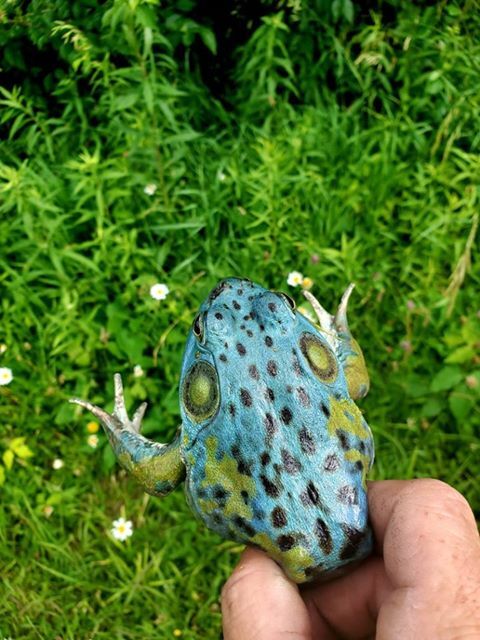CLEVELAND — Wildlife experts call it a “one in a million” find, and that’s exactly what happened to one Ohio man who encountered a blue bullfrog recently in western Ohio.
Matt Minnich was especially lucky to encounter this rarity. The frog becomes blue when it has axanthism, a mutation that interferes with an animal’s ability to produce yellow pigment.
“It's an extremely rare situation. Basically, it's just a color or lack of color combinations. So basically, it's a genetic thing that would be caused by a recessive gene,” said Brian Banbury, executive administrator for Information and Education for the Ohio Division of Wildlife.

He said more people are far more familiar with what would be called melanism, which happens when an animal has too much dark pigment, and the opposite of that which is called leucism, used to describe the partial loss of pigmentation in an animal.
This mutation has been discovered in 23 amphibian species, mostly in the family Ranidae, the true frogs.
Banbury said if you think back to art class and the basic principle of mixing colors, yellow and blue make green, even in frogs, therefore the lack of yellow pigment makes the blue show on the frog.
Some may think this pigmentation has something to do with the environment the frog is in, like poor water quality, but Banbury said this likely is not the case.
"It's a genetic condition," Banbury said. "It is an abnormality, but I hate to use that word because people then automatically think something's wrong when that is probably not the case."
Since the blue color sticks out in the wild and doesn’t blend with the green landscape, it causes the frog to be more susceptible to predators in the wild.
“Animals that have a condition such as that don't even don't make it to adulthood. So there may need to be many more like him that hatch every year that don't survive simply because if you think about it, you know, you think about why the color green probably works out very well for a frog. It is that the frog is most active during the late spring/ summer into early fall when the world around him is green. So it's a very effective but very effective camouflage generation."
The location of this particularly blue frog is “purely coincidental” Banbury said.
So what's he saying is you could find the next blue bullfrog in your favorite nature retreat. Just remember to snap a photo and keep a safe distance.


